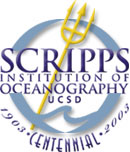(July 17 2005 deployment off the coast of Guadalcanal at 160.14°E,9.47°S):
A collaboration among 


jpg 295Kb pdf 1.8Mb
(July 17 2005 deployment off the coast of Guadalcanal at 160.14°E,9.47°S):
A collaboration among 


Second mission results (Oct 13 2006 deployment off the coast of Guadalcanal at 160.22°E,9.94°S):
First mission results (July 17 2005 deployment off the coast of Guadalcanal at 160.14°E,9.47°S):
Other relevant pages
Other pages:
 |
Dr. William S. Kessler
NOAA / PMEL / OCRD 7600 Sand Point Way NE Seattle WA 98115 USA |
Tel: 206-526-6221
Fax: 206-526-6744 E-mail: william.s.kessler@noaa.gov |
| See also: | Kessler home page Kessler publications PMEL home page | |